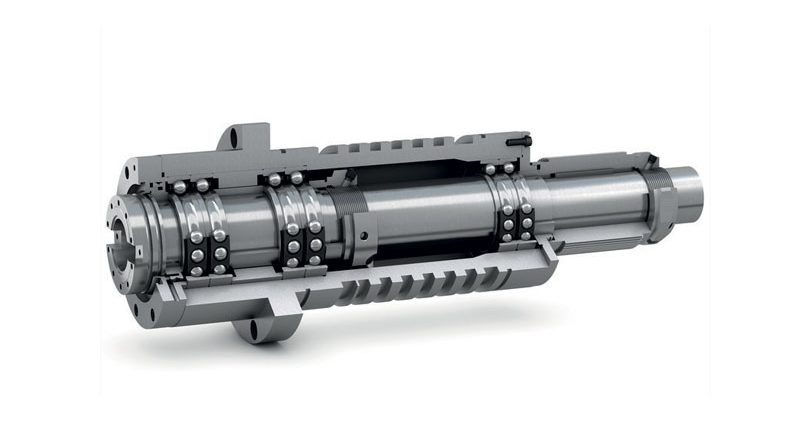Silent Bearings for Machine Tool Spindles
At EMO, Hannover, SKF unveiled its Silent Series super-precision angular contact ball bearings (ACBBs) for the production of grease-lubricated spindles. Minimising noise and vibration levels during operation was key to reassure users about the performance of their spindles.
by Alma Castiglioni
The Silent Series super-precision angular contact ball bearings have been developed by SKF in direct response to key issues faced by manufacturers of machine tool spindles.
They identified that minimising noise and vibration levels during operation was key to improving confidence in the performance of their spindles.
The polyammide cage helps reducing noise levels
Bearing cages in lower-speed spindles can make rattling noises during rotation. This is normal, but can be mistaken for a sign that something is wrong with the spindle or its components.
The SKF Silent Series feature a new and innovative polyamide cage centred on the balls that minimises this ‘cage rattling’ during rotation. Their silent operation increases the confidence of the end-user in the quality of spindles.
Fast mounting is another plus. These bearings have an optimised tolerance range on the bore and outside diameter, resulting in improved load sharing across the bearings when mounted in sets.
This not only improves spindle efficiency, but means less time is spent during the validation and testing processes to select the appropriate bearings.
Bearings specifications are close at hand with the App
With the SKF SuPB Data Manager App from SKF, the most important specifications of the bearings are close at hand on smartphones and tablets.
The Data Matrix code on packages and bearings can be simply scanned to receive information on the exact marking of the bearing, and when and where the bearing was manufactured.
SKF Silent Series bearings are available in two designs: high-capacity D design 719 and 70 series, which exhibits a
high degree of system rigidity and stiffness, and a high power density for a compact design; and high-speed E design 70 series, which demonstrates excellent thermal stability across a wide range of operating speeds.
Perfect bearing arrangement inside the spindle
A key role is offered by calculation tools, such as SKF SimPro Spindle, which makes it easier for customers to design and choose the right bearings for their machine tool spindles. This tool contains SKF’s combined engineering knowledge of the complex interactions of bearings and lubrication systems. It works like a “virtual test bench”, providing valuable information about the dynamic forces to which the bearings in spindles are exposed.
For this purpose, SKF SimPro Spindle is first fed with data on all relevant components such as shafts, bearings, gears, lubricants, spacers and springs. An intuitively operable input mask is available for this – including a “direct connection” to SKF’s permanently updated rolling bearing portfolio. The user now adds operating conditions such as speeds, temperatures, loads and lubrication as well as fits of shaft and housing to the resulting model. The load and speed conditions can also be entered as a combined load cycle. Partial or full load analyses can then be carried out (depending on the operating conditions of the machine).
Following the virtual test run, SKF SimPro Spindle provides its user with a variety of useful performance parameters such as bearing service life and load, load zones, contact stresses, bearing misalignment and kinematics, lubricant characteristics, bending lines or system frequencies. The eigenmodes of vibration can be depicted in the form of 3D animations.
In addition, the tool can calculate the required tightening torques, calculate the grease service life and help optimize the oil flow rates including the position of the oil nozzles.
In addition, it has improved preload and bearing clearance calculation for entire groups of super-precision bearings within a spindle. Because the simulator takes into account the interaction of the most diverse interacting variables, it can significantly shorten the development times of new designs.

